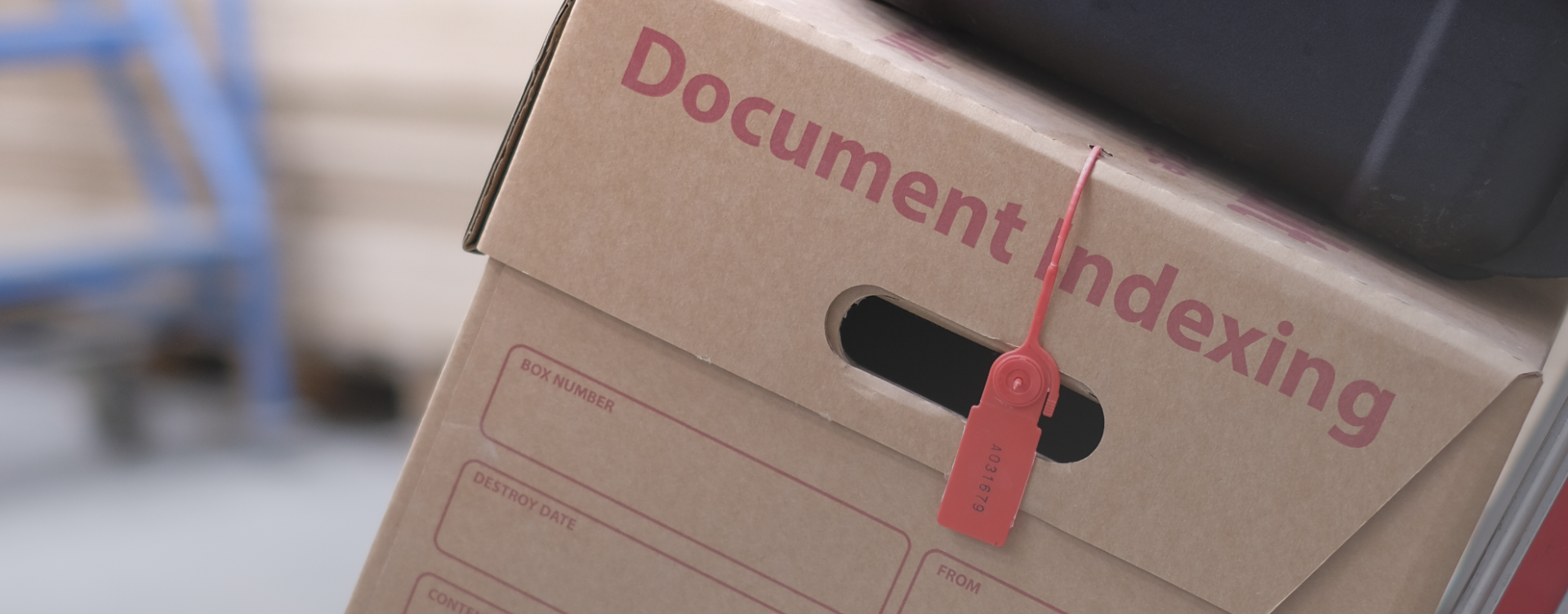Whatever the size of your business or the industry you are in, there are a variety of records and documents that need to be retained for legal and compliance reasons. The amount of data that is collected these days is enormous and many can feel like they are drowning in a sea of paper. The thought of organising all these records, some of which need to be retained for different periods of time, can be somewhat daunting, but it needn’t be.
Managing a business’s records inventory can be a simple process, once the ground rules have been set in place. Keeping records in an organised, easily identifiable, logical way is essential for any business to not only retrieve as and when required, but to also remain compliant with regulatory and legal bodies, and to identify what records need to be destroyed, and when. Adopting records management best practices and creating a document retention policy can be the difference between a successful business that grows and an outdated business that fails.
Privacy and security at the forefront
With the GDPR (General Data Protection Regulation) that came into effect in May 2018 and the drive to ensure businesses are compliant, the first task is to make sure that data privacy and security measures have been established, and are adhered to. Any breach of this can lead to not only cost implications in terms of fines, but also affect the credibility and reputation of a business.
The GDPR also has an impact on the length of time documents can be stored, subject to the type of record they are. Documents that are beyond the date by which they need to be retained, it is the responsibility of the holder of those documents to have them destroyed, deleted or shredded, making sure that no trace of the documents can be found.
Documents that contain confidential, personal and sensitive information, such as bank account, tax information and passwords, must be stored securely to prevent them from being seen or falling into the wrong hands.
Create a records management strategy to capture, record, track and monitor
Managing a business’s records effectively needs a records management strategy that identifies the processes and procedures necessary for archiving and storing information and documents. Once created, every staff member who needs access to the documents must be made aware of the procedures, and the people tasked with handling the records should be identified and held accountable.
Any system, be it internal or outsourced, must be developed in line with the business’s classification requirements for compliance and ease of access. Many document and records management systems today have certain functionalities that will enable the easy capture, identifying and categorising of records, such as:
- Automatic capture of data and records according to pre-defined classification.
- Managing content across different repositories, such as on the network drive, in the cloud and within the office environment.
- Managing different data and record formats, such as digital, hybrid or physical documents, including social media and email records.
- Identifiable and defensible audit trails that can be traced for historical actions or unauthorised activity, adhering to legal and regulatory guidelines.
Relying on the end user in managing what documents and records are captured, and the way they are retained, can often lead to incorrect record-keeping as well as a negative affect on workflows. Establishing a comprehensive, effective document and records management system will ensure that the right documents and records are accurately captured, in the background, and that they are correctly recorded, categorised, stored and archived.
Regular review of document inventory
A business needs change; what was applicable a year ago may not be applicable today. Any records and document management strategy needs to be reviewed on a regular basis to ensure that the business is still compliant in their records management. In addition, a review will highlight any gaps in record-retention policies and processes, ensure that the system has accommodated any changes in regulations, and identify any areas where better time efficiencies can be applied.
Adhere to document retention lifecycles and destroy records when necessary
It can be all too easy to forget to destroy documents that are no longer needed, which leads to excessive storage space and higher administrative costs. Most records can be destroyed after a specific period of time but this can be a complex, time-consuming task. Using a company that specialises in document and records management, like Archive-Vault, will help to ease the process and ensure due diligence in determining which documents need to be destroyed and when. Archive-Vault is also able to organise the destruction of the documents and records on the business’s behalf, as and when the time comes.
For businesses today, ensuring they have an effective, secure document and records management policy and system in place is crucial, particularly for regulatory and compliance purposes. Whether it’s a small or medium-sized business or a large corporation, employing the help of a company that is dedicated to managing document inventories and archive storage requirements can make the whole process far simpler and easier.
At Archive-Vault, we know how important it is that a business’s physical documents are stored and archived safely. We keep them secure and our clients are able to manage their document archives, setting due dates for destroying confidential and sensitive information when required, and we do the rest. We understand the importance of document management, whether those documents are at the business’s premises, in transit or at our storage facility, helping businesses to not only meet the legal and regulatory obligations, such as the GDPR, but also securely organise, categorise, store and retrieve information at the right time, for the right people, in the right place. We specialise in making the process of document archiving, simple and seamless.
Contact us on info@archive-vault.co.uk for more information.











